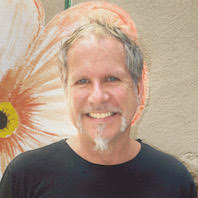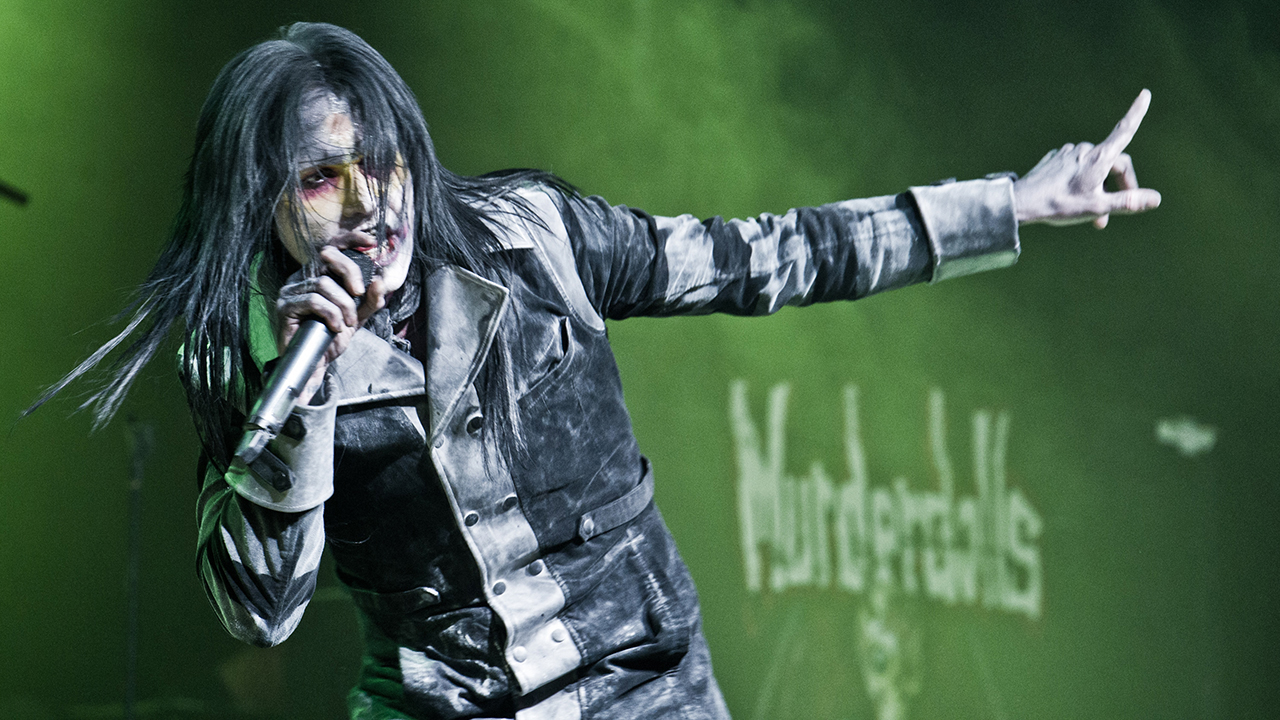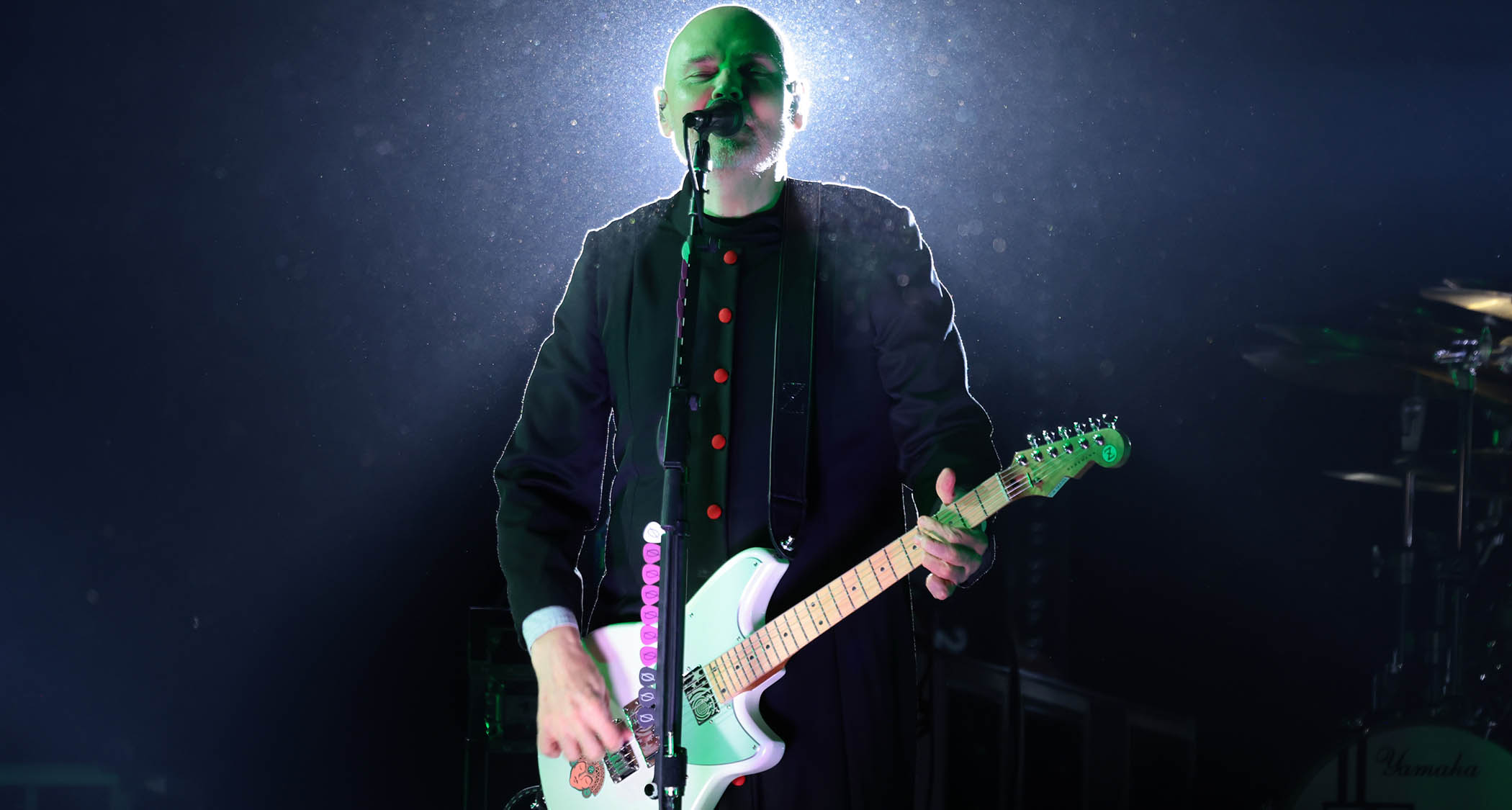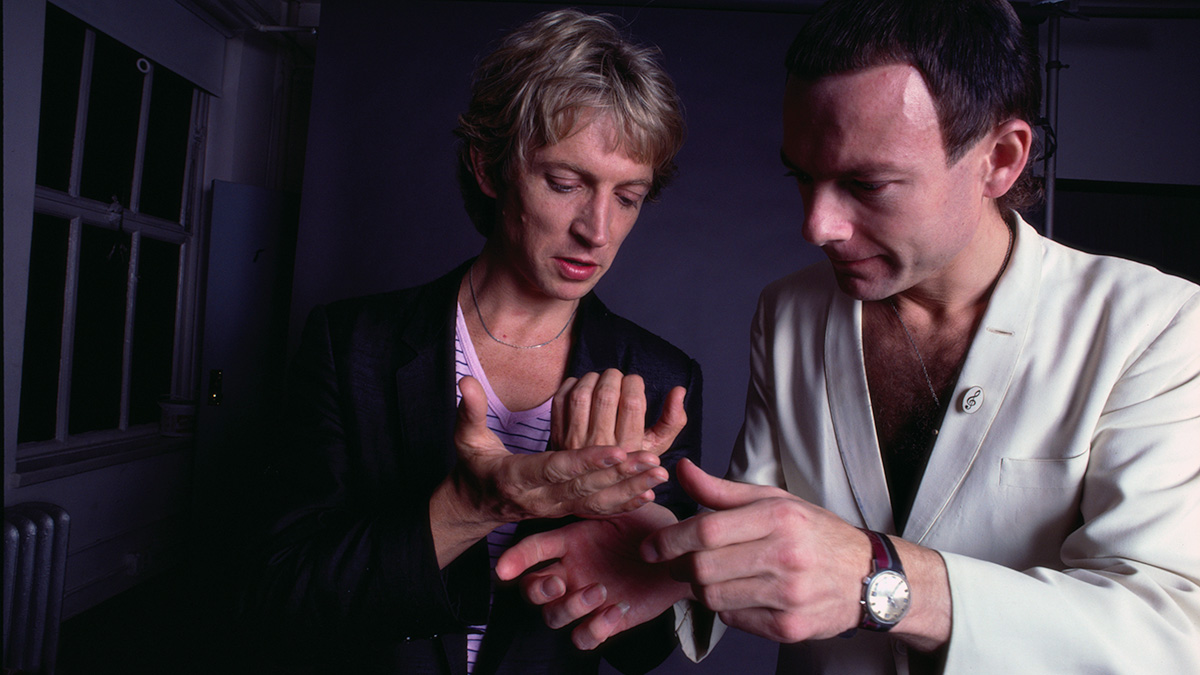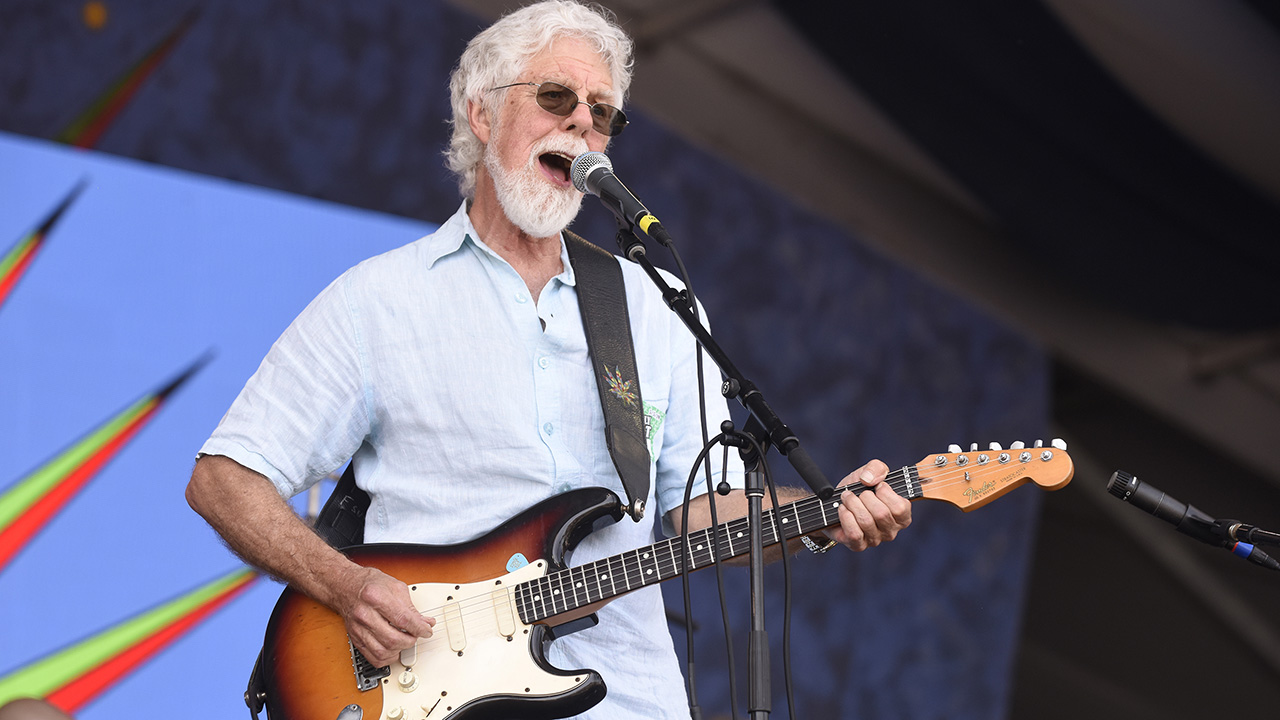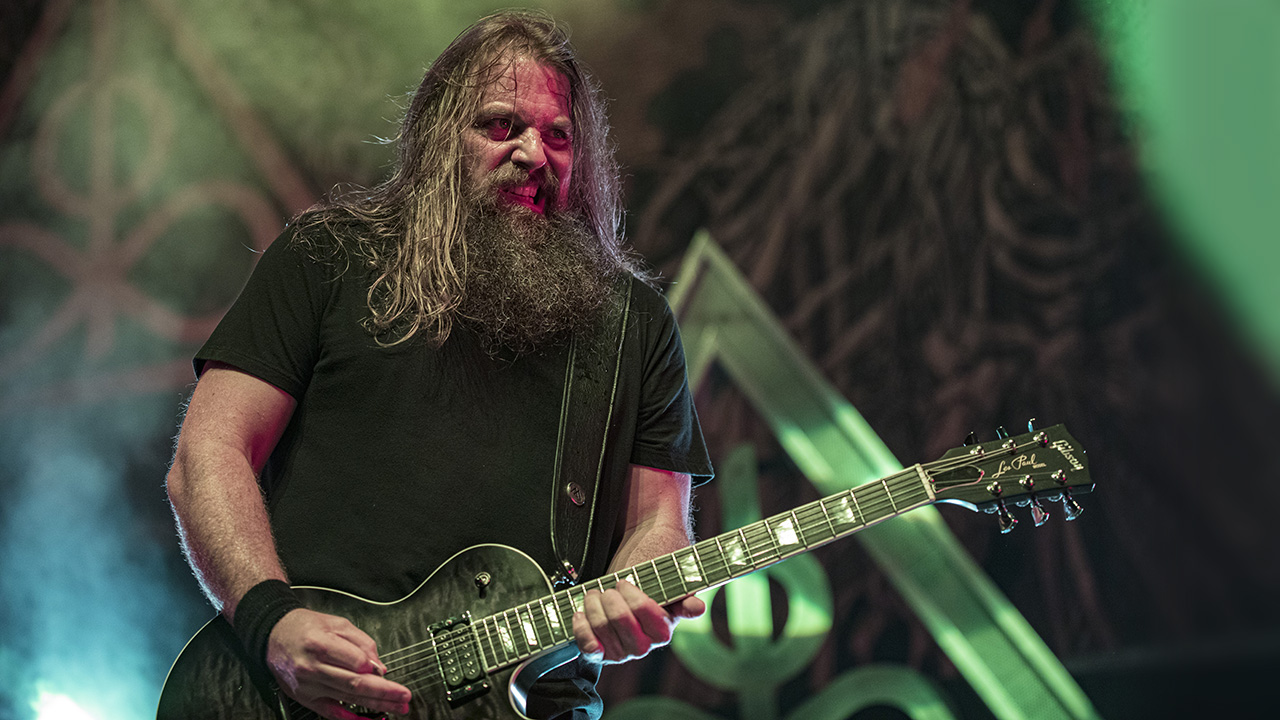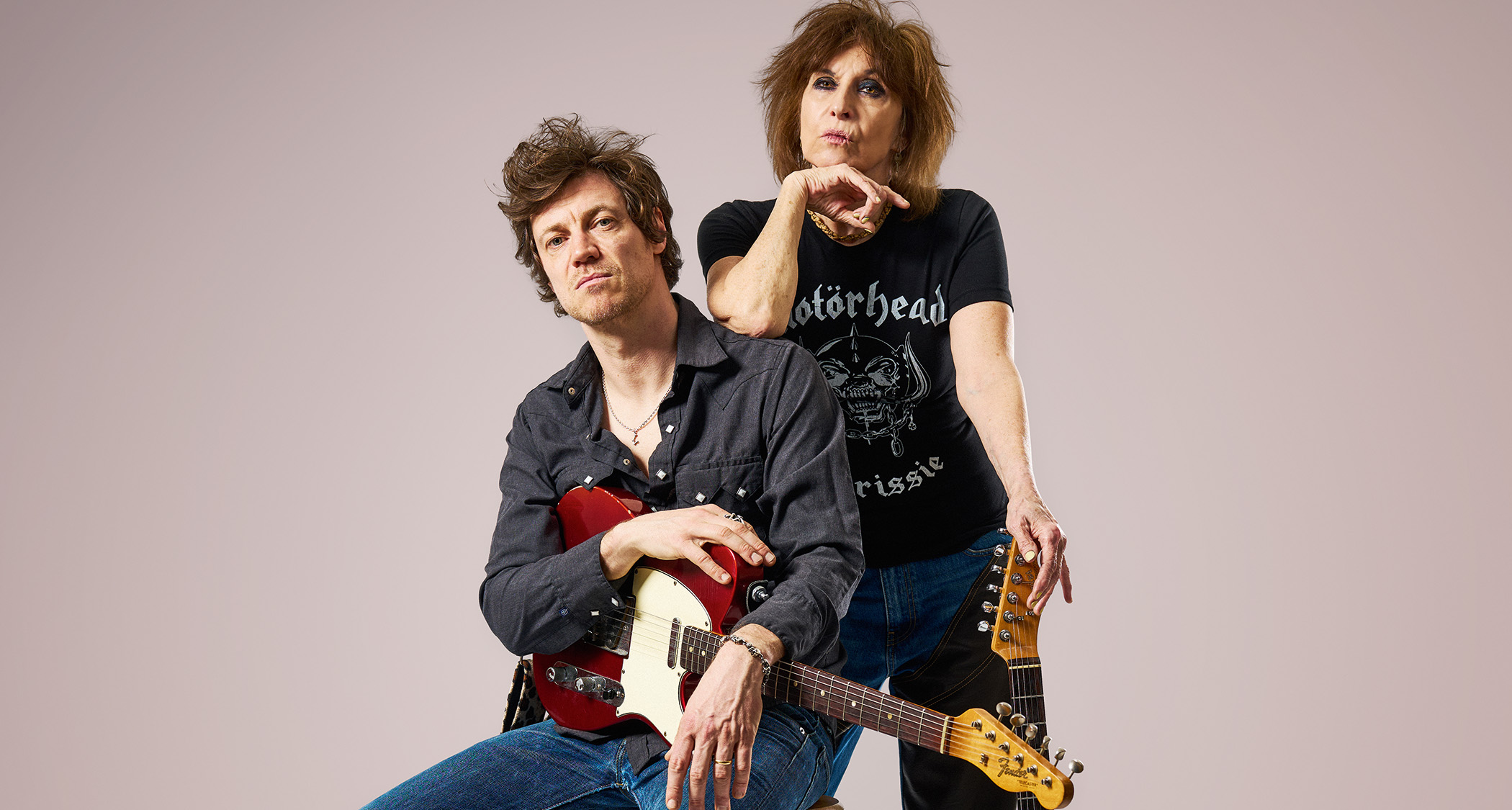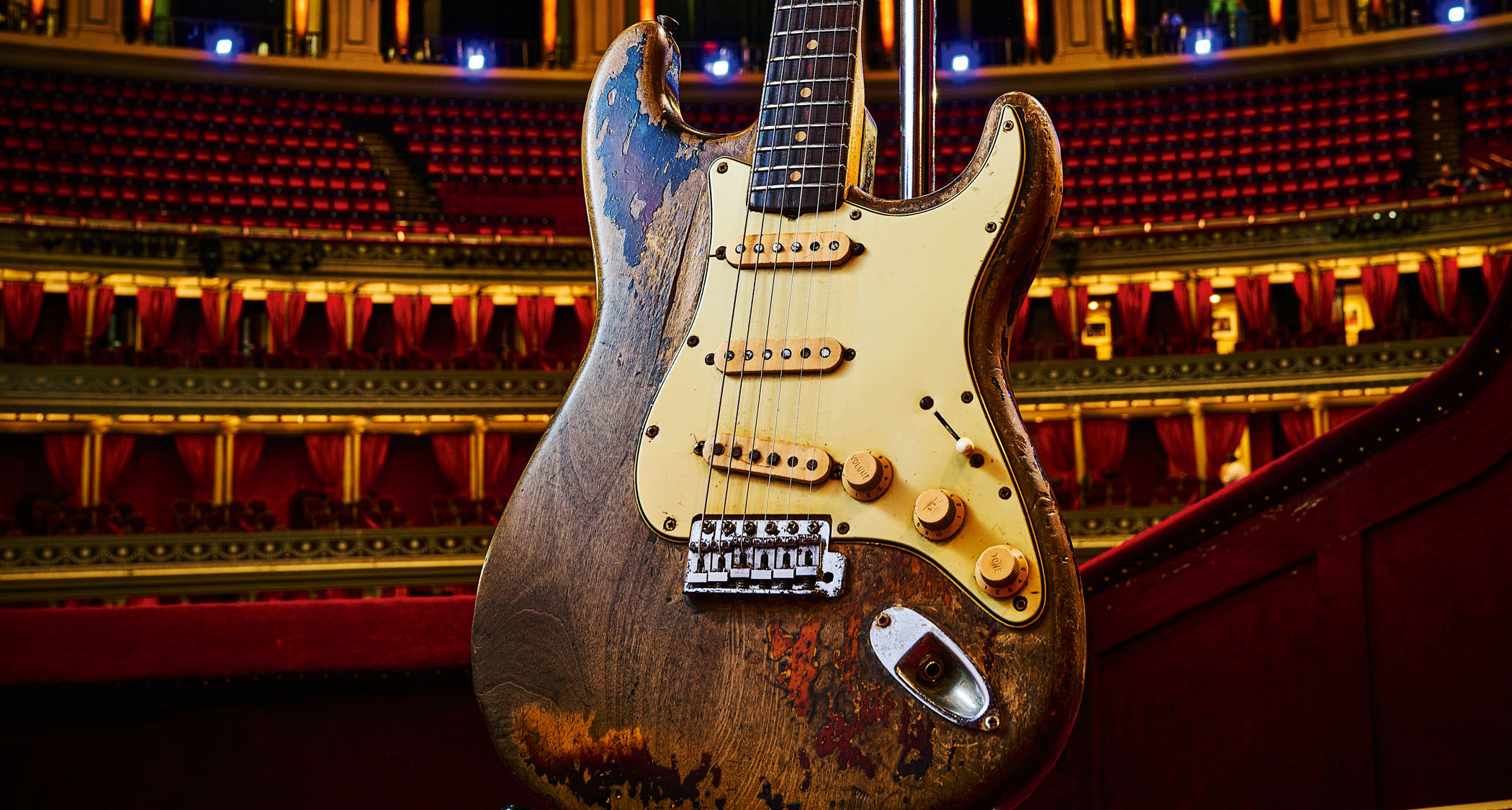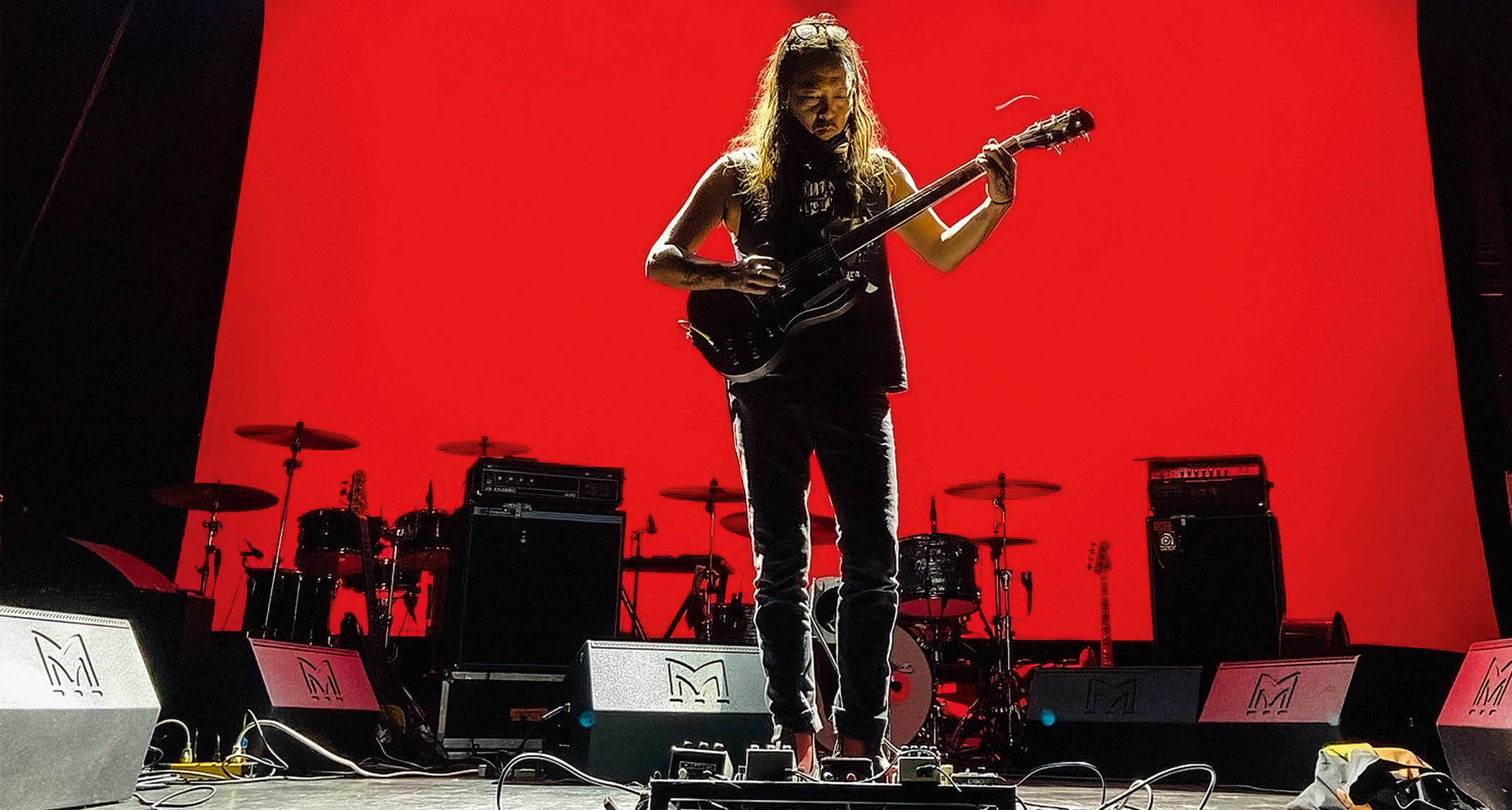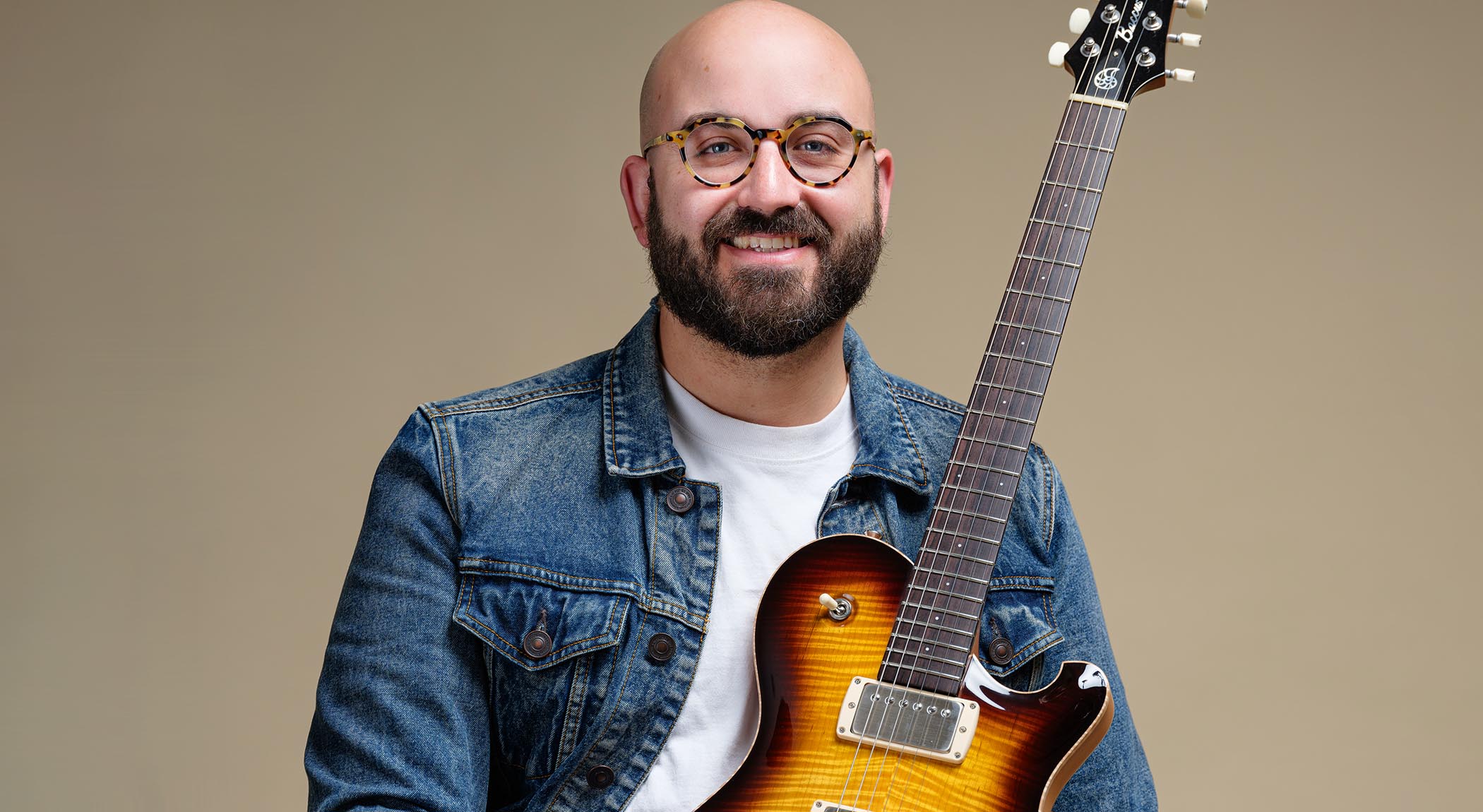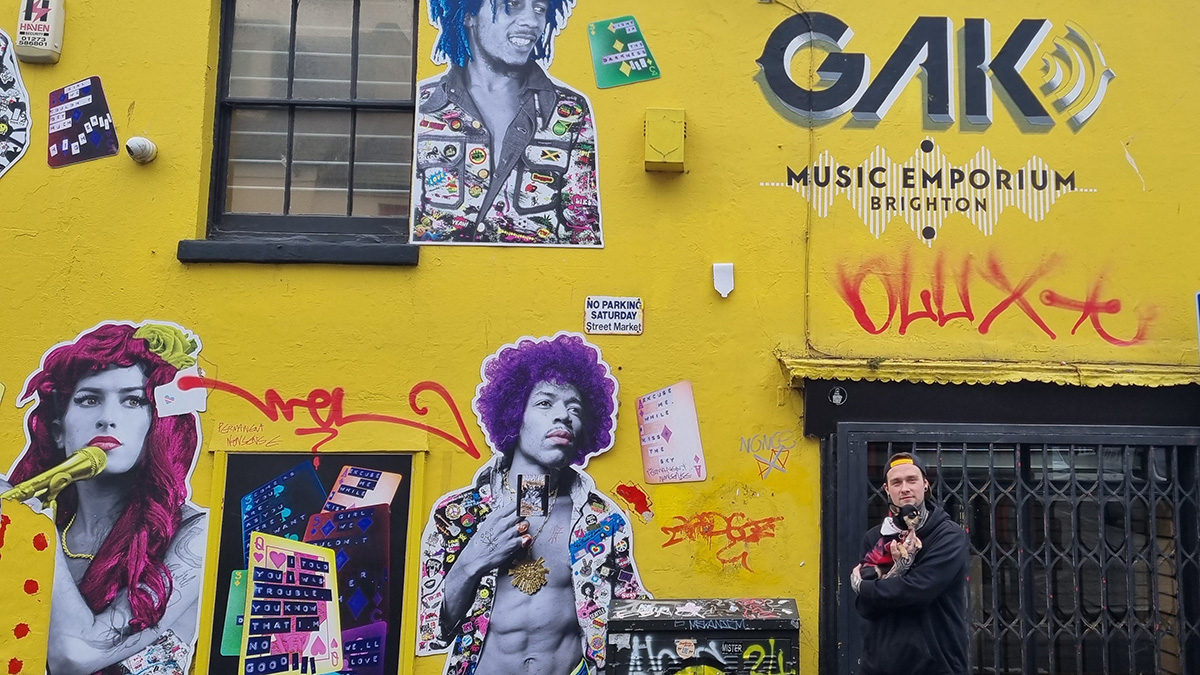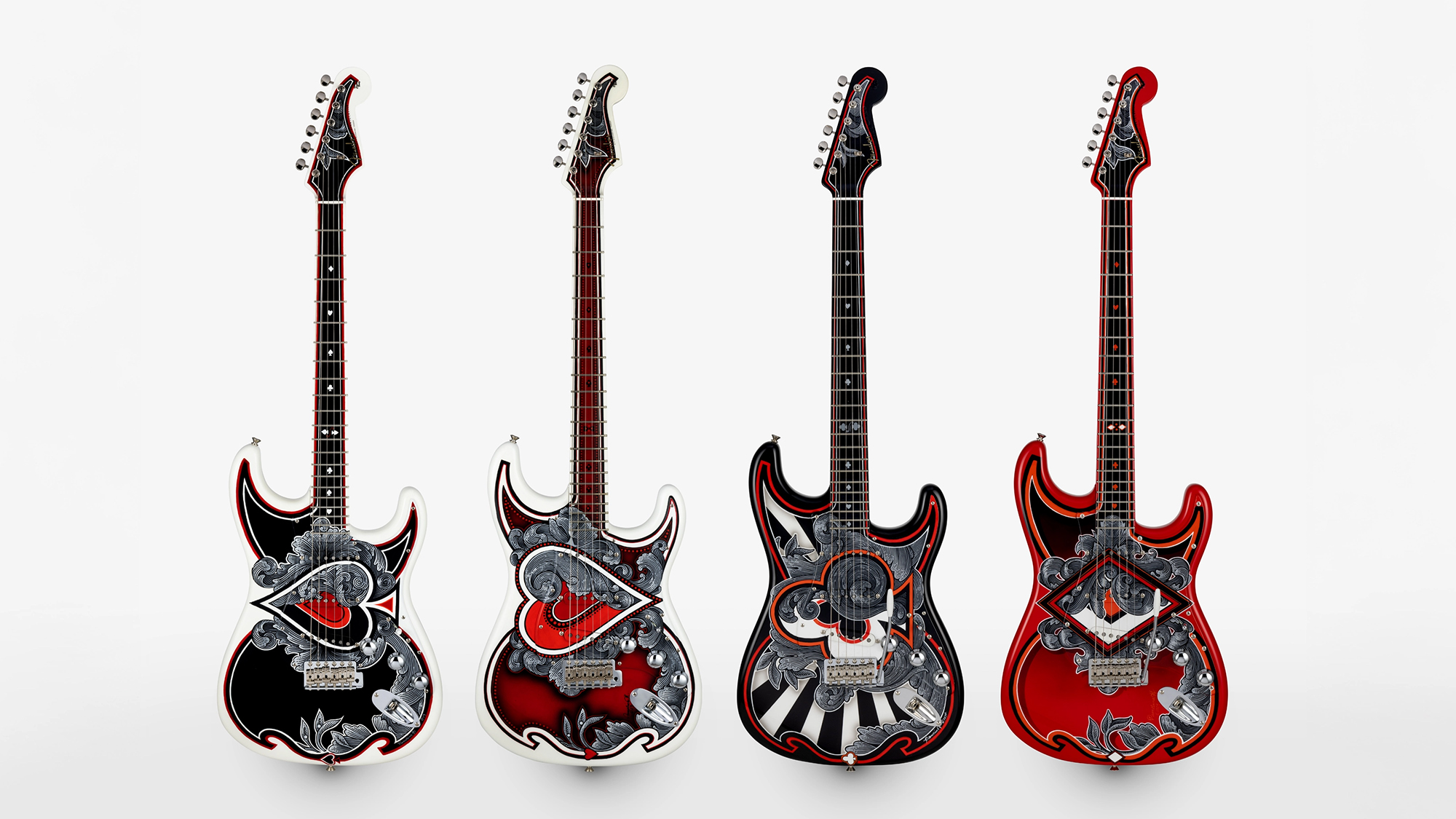The electric guitar shredded itself to death in the ‘80s. It had to start over, but the ‘90s grunge revolution didn‘t just change the face of guitar playing – it changed the world
Guitar World presents a grunge guitar guide to the ‘90s, the decade when Seattle became the epicenter of the musical universe, and resurrected the electric guitar with a raw, dirty sound that gave birth to a whole new generation of guitar players
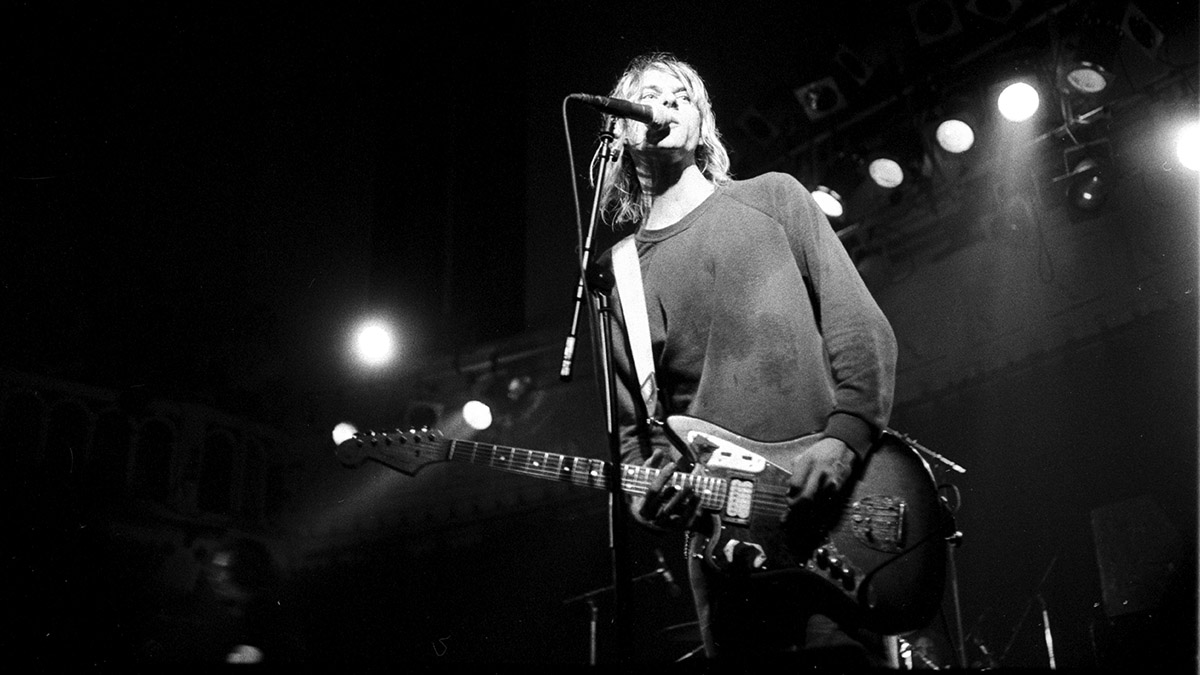
“AAARRRRRGGGHH!!! THIS IS so flippin’ AMAZING! Hahahaha. Hmmm, what should I do first? Burn my guitar … or light MYSELF on fire! Give me MORE, but GOD ALMIGHTY, MAKE IT STOP!”
Does that sound insane? Yes, indeed. But that was the kind of crazy talk many guitarists engaged in during the ’80s. And who could blame them? George Lynch, Vito Bratta, Steve Vai, Nuno Bettencourt, Reb Beach, Yngwie Malmsteen, Kirk Hammett, Eric Johnson, Paul Gilbert, Marty Friedman and about a billion other handsome virtuoso shredders just kept getting faster and better until all you could scream was, “I surrender! Fuck playing the guitar, I’m gonna join the Marines.”
Then suddenly on September 10, 1991, a date that will live in infamy, everything changed. Nirvana, a melodic punk rock band from Seattle, released a simple four-chord slugfest titled Smells Like Teen Spirit and sparked a musical revolution that blew all the fleet-fingered pretty boys out of the water.
Nirvana and their charismatic singer/guitarist Kurt Cobain championed gritty “authenticity” over the glamorous excesses of the hair metal of the ’80s, and their disheveled presence suddenly made bands like Winger, Warrant and Whitesnake look like dolled-up saloon girls in comparison. And just like that, the guitar virtuoso crazy train was completely derailed like the Norfolk Southern locomotive in Ohio.
As shredder extraordinaire George Lynch recalled in Tom Beaujour and Richard Bienstock’s excellent 2021 book Nöthin’ But a Good Time: The Uncensored History of the ’80s Hard Rock Explosion, “Unfortunately, [’80s hair metal] worked its way to an apex, and then we backed ourselves into a corner. There was no place to go. Because you could only play so fast and then what did it really matter? Nirvana came along and said it all with one nasty, dirty, attitude note. You go, ‘Ah, that’s rock and roll!’”
In a purge that would’ve made a Russian dictator green with envy, anything to do with ’80s guitar hair metal – the Spandex, the decadence, the pointy guitars, the makeup, the tapping, the whammy dives – was put up against the wall and shot. And whoever managed to escape was sentenced to live out the rest of their days doing hard labor at the bottom of the charts or playing 400-seaters in Poughkeepsie.
While some Guitar World readers mourned the loss of their well-coiffed heroes, many more breathed an audible sigh of relief. You no longer had to be genetically superhuman to play rock ’n’ roll or get a record deal; being a talented schlub was just fine.
Get The Pick Newsletter
All the latest guitar news, interviews, lessons, reviews, deals and more, direct to your inbox!
You still had to play well, but you didn’t have to lock yourself in a room like a Benedictine monk and practice arpeggios in three octaves for 10 hours a day. A good song with a solid riff was all you needed, and you were good to go.
The myth of grunge guitar #1
One of the biggest myths of the ’90s was that the alternative musicians of the day were as primitive as cave-dwelling mud people. The truth is, there were many imaginative, if not downright sophisticated guitarists during that era, including Nirvana’s great insurrectionist, Kurt Cobain.
While Cobain’s primary gift was writing spectacular vocal melodies over surprising chord changes like on Lithium, he was also a ferocious rhythm guitarist who rarely lost the groove, even when hurtling himself across the stage with total abandon or screaming the choruses to any of his memorable anthems.
“All the years I spent practicing scales and virtuoso-type riffs, [Cobain] was locking onto these chords in a very connected way,” shredder icon Steve Vai once observed. “When you saw Kurt strumming chords, it was virtuosic in a sense because it sounded like an orchestra when he slammed that guitar. Every string had its own ZIP code, if you know what I mean.”
Even if you don’t buy Vai’s assessment that Kurt was a “virtuoso,” there were plenty of other alternative rockers that deserved the title during the Great ’90s Reset. Seattle’s Kim Thayil and Chris Cornell of Soundgarden, for example, created daring textures via unorthodox drop tunings and unusual time signatures on many of their biggest songs.
In 1994 the duo used a bizarre E-E-B-B-B-E tuning over an unconventional 5/4 time signature on their single My Wave, a song made even more unusual by the fact that Ben Shepherd used a wah pedal on his bass.
And there was no denying the greatness of Thayil’s wild-ass solo on the band’s chart-topping Black Hole Sun. Sounding like it was being played forwards and backwards at the same time, it was perhaps the most avant-garde lead guitar break on a Number 1 song in the history of rock. (It’s interesting to note that Black Hole Sun also went to Number 1 in Iceland, because if I had to guess what Icelandic rock music sounded like, it would probably resemble the alien splatter-art guitar solo on Black Hole Sun.)
In addition to Soundgarden, there were other groups and guitarists serving up more great riffs and solos than you could shake a Led Zeppelin at. Hard rock bands like Alice in Chains (Man in the Box, Them Bones), Red Hot Chili Peppers (Under the Bridge, Give It Away), Stone Temple Pilots (Interstate Love Song, Plush), Smashing Pumpkins (Bullet with Butterfly Wings, 1979) and Green Day (Longview, Basket Case) kept mainstream rock radio humming for the next decade with ballsy, memorable guitar rock.
And it could be argued that the ’90s was superior to the ’80s when it came to top-notch, up-your-nose-with-a rubber-hose heavy metal. Just skimming the surface, you had Ozzy Osbourne (with Zakk Wylde), Tool, Korn, Deftones, Rage Against the Machine, System of a Down, Meshuggah, Machine Head and Napalm Death releasing brilliant and innovative albums.
Come as you are
Not only did attitudes regarding guitar playing shift, but so did just about everything else. Lyrics became more introspective, and attitudes toward the opposite sex and gay people became more enlightened.
Seattle punk rock also introduced a more relaxed dress code, which also came as a relief to many guitar players. To be a guitar hero in the ’80s you had to have chiseled cheekbones, washboard abs and look good in tight pants.
You also had to know how to apply hair dye and eye makeup with the expertise of supermodel Cara Delevingne. It was exhausting. While it was hard enough to play like Whitesnake’s John Sykes, it was even more difficult to look like him!
In the ’90s, being a slob was no issue. You could wear jeans or baggy shorts, a thrift-shop T-shirt and a flannel shirt or hoodie and be done with it. That was a fantastic development if you had a gut and would rather pound a beer (or seven) rather than spend a week’s pay on a line of cocaine. And if you were balding and sorta ugly it didn’t matter that much… you could just grow a beard, get some tattoos and shave your head. That was awesome, too!
That development was particularly good news for Pantera and their incredible metal guitarist Dimebag Darrell. Pantera had struggled throughout much of the ’80s because, frankly, they looked ridiculous in the Spandex. But once fashion trends shifted, and they were able to become who they really were – a bunch of drunk, lovable dirtbags from Texas – the world became their öyster.
Unplugged
Another interesting manifestation of the Great ’90s Reset was the enormous success of Unplugged, the MTV music series that showcased musicians performing acoustic versions of their songs. What could be more “authentic” than stripping your biggest songs down to their bare essentials than playing them on a Gibson Hummingbird with no amplification?
New-school bands who performed on the show like Nirvana, Alice in Chains, Hole, Stone Temple Pilots and Oasis took great pleasure in demonstrating that they didn’t need big-ass amps to bring drama and intensity to their songs.
At the same time, the show allowed classic rockers like Eric Clapton, Jimmy Page and Kiss to reemerge, while showing “the kids” how big boys played “real” guitars.
Superfuzz Big Muff
Guitar gear also went under some major transformations in the ’90s. During the ’80s, players took pride in performing with shiny, candy-colored, custom instruments tricked-out with things like locking tremolos, scooped fretboards, pointy headstocks and unusual pickup configurations.
Whereas in the ’90s, even being seen with a guitar that had any of those qualities could get your grunge card revoked permanently (unless you could prove you were being ironic!).
Most new-school guitarists gravitated toward vintage models, like Foo Fighter Dave Grohl who could be seen playing a Pelham blue 1967 Gibson Trini Lopez guitar. But really, almost any guitar would do as long as it had some wear and tear and didn’t look like it cost an arm and a leg.
In a hilarious Guitar World interview conducted with Cobain by our ne’er-do-well Seattle correspondent Jeff Gilbert, the Nirvana iconoclast summed the general aesthetic and attitude of the era perfectly.
After proclaiming his love for Fender Mustang guitars, he counterintuitively explained why. “They’re cheap and totally inefficient, and they sound like crap,” he said. “They are also small and don’t stay in tune, and when you want to raise the string action on the fretboard, you have to loosen all the strings and completely remove the bridge.
“You have to turn these little screws with your fingers and hope that you’ve estimated right. If you screw up, you have to repeat the process over and over until you get it right. Whoever invented that guitar was a dork.”
And that was why it was his favorite instrument!
Pedalboards also shrank in size and ambition. Just a few years earlier, elaborate Bob Bradshaw rigs that allowed you to control a bunch of rack-mounted effects were all the rage, but in the punk rock ’90s, a few pedals seemed to do the trick.
Even Rage Against the Machine guitarist Tom Morello, a man known for his innovative use of effects, pulled most of what he needed out of a modest four or five pedals and a Marshall amp.
Speaking to Guitarist, Morello laughed off any assertion that he had a gargantuan pedalboard.
“I’ve been accused countless times of using a ton of effects – but I’ve used the same four pedals for the last 30 years: a wah, a [DigiTech] Whammy, a delay and a phaser. It’s just about finding different applications for the same old shit. The electric guitar is a relatively new instrument on the planet. It’s just a piece of wood with six strings and a few electronics. But you can manipulate it.”
He continued by explaining his unique hip-hop approach to his place in the band: “As soon as I had that revelation in Rage, it was like, ‘I’m the DJ in the band, but rather than sampling, I’m gonna use my bare hands to create this new vocabulary for the electric guitar.’ ” And he did exactly that.
But perhaps the most hilarious irony of the ’90s came when Korn released their debut album in 1994. Guitarists James “Munky” Shaffer and Brian “Head” Welch raised more than a few eyebrows when they each appeared on stage with the ultimate tricked-out ’80s guitar – a Steve Vai seven-string Ibanez Universe.
But instead of using it to shred, they took advantage of the low seventh string to produce some of the dirtiest, most bone-rattling power chords the world had ever known.
According to the duo, they stumbled upon the axes at a local California pawn shop. During the early days of the ’90s, no guitarist wanted to be caught dead with one, so the price of the instruments had fallen through the floor.
Although the two guitarists were broke, the guitars were so cheap they decided it was worth buying a couple of them as an experiment. To their amazement, they discovered the gleaming seven-string guitars were actually incredible for creating the ugliest of sounds.
“I knew that somewhere, some kid was going to get the concept of the seven-string and do things with it that were beyond what I was doing,” Vai told Ultimate Guitar in 2020.
“Then, I’m driving down the street and this song comes on the radio and I’m like, ‘What the heck is that?’, and I pull the car over. It sounded so heavy, I instinctively knew it was a seven-string and somebody was doing something with it that was much different than what I was doing. And that band was Korn. That was sort of the rebirth of the JEM Universe.”
The myth of grunge guitar #2
Which brings us to perhaps the biggest myth about the ’90s. Grunge and alternative rock did many things, but one thing it didn’t do was kill shredding. A number of brilliant guitar technicians came of age during that era, including Dimebag, John Petrucci, Ben Weinman, Adam Jones, Buckethead and Jeff Loomis, to name just a few.
The real difference was in the ’80s, you had to be one of the attractive “popular kids” to play in a rock ’n’ roll band. The genuinely awesome thing about Seattle punk rock was it knocked down those walls and gave everyone permission to participate.
You could be tall, short, fat, bald, hairy, pretty, ugly or even wear a bucket on your head, but as long as you had soul, wit and imagination, you could at least jump on stage without everyone laughing at you. Like a rock ’n’ roll sequel to the Revenge of the Nerds, everyone laughed, cried and learned. And that, as the great philosopher Miley Cyrus once said, “was pretty cool.”
A long time ago in a galaxy far, far away Brad was the editor of Guitar World from 1990 to 2015. Since his departure he has authored Eruption: Conversations with Eddie Van Halen, Light & Shade: Conversations with Jimmy Page and Play it Loud: An Epic History of the Style, Sound & Revolution of the Electric Guitar, which was the inspiration for the Play It Loud exhibition at the Metropolitan Museum of Art in New York City in 2019.
“Vintage looks and performance at an accessible price”: Epiphone expands its high-end Inspired by Gibson Custom Collection – and introduces a key upgrade to its 1959 Les Paul Standard reissue
“I must’ve played hundreds of Les Pauls, and I can safely say this is up there with the best sounding of them – it even gives my own Gibson Les Paul Standard a run for its money”: Epiphone Inspired by Gibson Custom 1957 Les Paul Goldtop review
